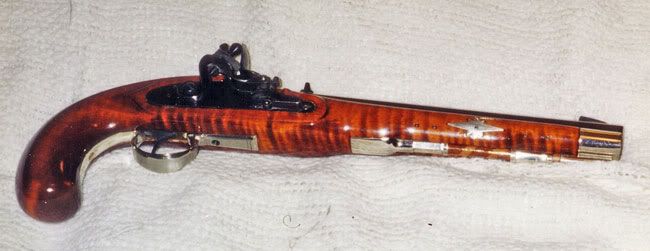I am thinking of getting a kit gun to keep me busy. Been retired for a short while and need something to keep me going.
Some info on what I already have. I have a tradtions Crocket, .32 cal. squirely gun. A Lyman GPR FL .50 cal, and a Lyman Hawkens Carbine in .54 cal. I shoot sabots from the Hawkens because it is a 1 in 24' twist. The GPR is a 1 in 66" twist and I shoot PRB's. I also shoot PRB's in the Crocket. It has a 1 in 48" twist.
The idea of the kit gun is for me to put it together. This would make me bond more with the piece, I think. This would be the first time I am trying something like this. Do I need any special training?
So, who has the best kit gun available out there??? Any help in this area would be greatly appreciated guys. :thumbsup:
Some info on what I already have. I have a tradtions Crocket, .32 cal. squirely gun. A Lyman GPR FL .50 cal, and a Lyman Hawkens Carbine in .54 cal. I shoot sabots from the Hawkens because it is a 1 in 24' twist. The GPR is a 1 in 66" twist and I shoot PRB's. I also shoot PRB's in the Crocket. It has a 1 in 48" twist.
The idea of the kit gun is for me to put it together. This would make me bond more with the piece, I think. This would be the first time I am trying something like this. Do I need any special training?
So, who has the best kit gun available out there??? Any help in this area would be greatly appreciated guys. :thumbsup:





